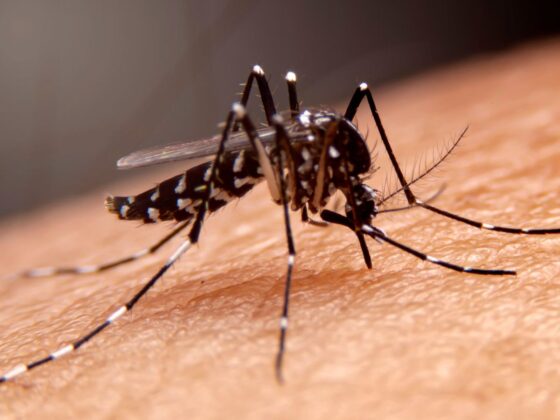New Delhi, 07 December 2024: The fight against cancer in South Asia has reached a critical juncture, as highlighted by a recent report in The Lancet. This report underscores the urgent need for comprehensive cancer control programmes across the member nations of the South Asian Association for Regional Cooperation (SAARC), including Afghanistan, Bangladesh, Bhutan, India, Maldives, Nepal, Pakistan, and Sri Lanka. Despite strides in healthcare infrastructure and awareness, cancer remains a leading cause of morbidity and mortality in this region, demanding immediate and coordinated action.
Cancer: A Growing Threat in SAARC Countries
The SAARC region, home to nearly a quarter of the world’s population, faces a disproportionately high burden of cancer cases. Factors contributing to the rising incidence include rapid urbanization, changing lifestyles, environmental pollution, tobacco use, and limited access to early detection and treatment facilities.
According to The Lancet, South Asia accounts for a significant share of global cancer deaths, with breast, cervical, lung, and oral cancers being the most common. Late-stage diagnosis, inadequate screening programs, and the social stigma surrounding cancer care exacerbate the problem, especially in rural and underserved communities.
Barriers to Effective Cancer Control
Insufficient Screening and Early Detection
Across SAARC countries, cancer screening programs remain sporadic and underfunded. Inadequate awareness and the lack of organized initiatives mean that cancers like cervical and breast cancer are often detected at advanced stages when treatment outcomes are less favorable.
Limited Healthcare Infrastructure
Many SAARC nations face significant gaps in healthcare infrastructure, including shortages of oncology specialists, diagnostic equipment, and radiotherapy facilities. Rural areas, in particular, struggle with poor access to cancer care services, forcing patients to travel long distances for treatment.
High Treatment Costs
The economic burden of cancer treatment is a significant barrier for many families in South Asia. Out-of-pocket expenses for chemotherapy, radiotherapy, and advanced medications push millions into poverty annually. Public health insurance schemes, where available, often fail to cover the full spectrum of cancer care.
Tobacco and Lifestyle-Related Risks
Tobacco consumption is alarmingly high in the SAARC region, contributing to the prevalence of lung, oral, and throat cancers. Poor dietary habits, low physical activity, and rising obesity rates are further driving the cancer epidemic.
Cultural and Social Challenges
In many parts of South Asia, cancer is viewed as a taboo subject, leading to delays in seeking medical care. Women, in particular, may face additional barriers to accessing cancer screenings and treatment due to cultural norms and gender inequality.
Recommendations for Strengthening Cancer Control
The Lancet report emphasizes the need for a multi-faceted approach to strengthen cancer control programmes in SAARC countries. Key recommendations include:
Enhanced Screening and Early Detection
Governments must prioritize nationwide cancer screening programs for common cancers like breast, cervical, and colorectal cancer. Mobile screening units and public awareness campaigns can help bridge the gap in rural areas.
Capacity Building in Healthcare
Expanding oncology training programs and increasing investments in diagnostic and treatment infrastructure are critical. Building partnerships with private and international organizations can support these efforts.
Tobacco Control Measures
Strict enforcement of tobacco control laws, combined with public education on the dangers of tobacco use, can significantly reduce cancer risks. Initiatives like plain packaging, higher taxes, and smoking cessation programs are essential.
Affordable Cancer Care
Expanding health insurance coverage and implementing subsidies for cancer treatment can ease the financial burden on patients. Partnerships with pharmaceutical companies can help lower the cost of essential medications.
Community Engagement
Addressing cultural stigma through community-driven initiatives and empowering local leaders to advocate for cancer awareness and prevention can create lasting change.
You may also like –

Several SAARC nations have made strides in cancer control despite challenges. India, for instance, has implemented the National Cancer Control Programme, focusing on prevention, early detection, and palliative care. Sri Lanka has established a robust primary healthcare network that integrates cancer screening and treatment services. Nepal has introduced initiatives targeting cervical cancer through HPV vaccination campaigns.
However, these efforts need to be scaled up and replicated across the region to achieve meaningful impact. Collaboration among SAARC nations can also play a vital role in sharing best practices, pooling resources, and fostering research on cancer prevention and treatment.
The Lancet report serves as a wake-up call for policymakers, healthcare professionals, and communities across South Asia. With cancer rates projected to rise further in the coming decades, the need for immediate action cannot be overstated. By strengthening cancer control programmes, enhancing healthcare infrastructure, and addressing socio-economic and cultural barriers, SAARC nations can mitigate the devastating impact of cancer and improve the quality of life for millions.
Read Also – Can Mushrooms Affect Cardiovascular Health and Cancer Risk? Here’s What a Study Says
The battle against cancer in South Asia is not just a medical challenge but a collective responsibility. Through commitment, collaboration, and compassion, the region can chart a path toward a future where cancer is no longer a death sentence but a manageable condition.











